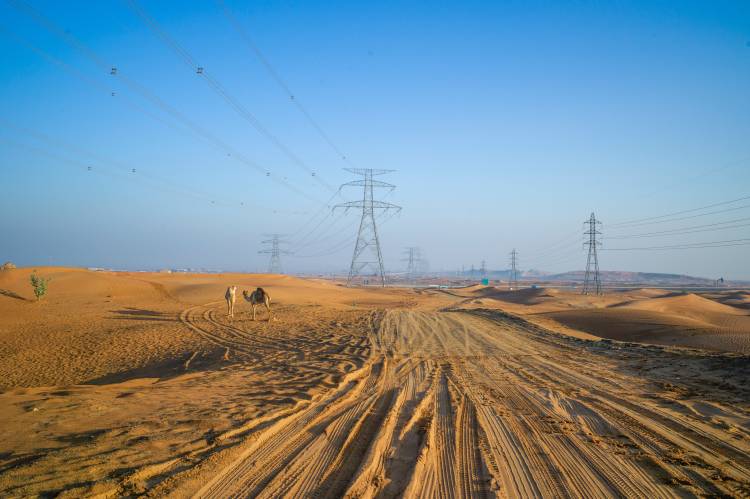
The Narendra Modi government has set an ambitious goal to provide 24×7 electricity across India by March 2025. If realised, this goal will mark a significant step in meeting the growing energy demand amid economic expansion and geopolitical uncertainties. This announcement comes just ahead of the general elections 2024, and will form part of the government’s agenda if the ruling BJP is re-elected.
The government claims to have achieved universal connectivity, and the focus now shifts to ensuring a reliable round-the-clock power supply. This initiative follows the successful electrification of all households through the SAUBHAGYA and Deen Dayal Upadhyaya Gram Jyoti Yojana schemes in the last decade.
READ | Make in India: Mobile phone manufacturing industry muscles up, eyes global leadership
Union Power and New & Renewable Energy Minister RK Singh recently highlighted the importance of energy security, especially in light of Europe’s challenges during the Russia-Ukraine war. India is ramping up its coal-fired power projects and increasing renewable generation capacity. The power ministry plans to add 91 gigawatts (GW) of coal-based thermal power, requiring an investment of Rs 7.28 lakh crore in the coming years.
Currently, the average power supply in India is 23.50 hours per day in urban areas and 20.5 hours in rural areas, according to a government reply in the Rajya Sabha. Efforts are underway to improve this to 24 hours, with states and power distribution companies (discoms) being encouraged to enhance their performance.
Electricity in India is a concurrent subject, with state power utilities responsible for energy supply and distribution. All states and union territories have signed agreements with the Union government to ensure 24×7 power to households, industries, commercial consumers, and agricultural sectors.
However, India faces energy shortages, particularly during the hotter months, when demand spikes. In the summer of 2023-24, power demand reached a record high of over 240 GW, and it is expected to rise to 250 GW in the next fiscal year. Meeting this increasing demand necessitates expanding coal-based thermal power capacity.
While expanding coal-based power capacity may bring stability to the immediate need for increased wattage, environmental concerns must not be overlooked. India faces increasing pressure to diversify its energy mix beyond fossil fuels, with a growing emphasis on renewable resources like solar and wind. Balancing the short-term goal of 24×7 power with the long-term need for sustainable energy is a crucial challenge the government needs to address. This includes tackling issues like land acquisition for renewable installations, grid integration challenges, and storage solutions for intermittent renewable energy sources. Furthermore, modernisation of transmission and distribution infrastructure remains essential to minimise power losses and ensure efficient delivery across the vast Indian landscape.
Despite government claims of successful electrification through flagship schemes, some states, including Bihar, Madhya Pradesh, Telangana, and Himachal Pradesh have experienced significant cuts in power supply hours in rural areas.
One major challenge to the 24×7 electricity plan is the state of government-run discoms. These suppliers urgently need to invest in more Power Purchase Agreements (PPAs), modernise their transmission and distribution infrastructure, and implement reforms to ensure seamless power supply. Although discoms’ health has improved recently, attracting necessary investments hinges on setting and meeting deadlines for improvement.
The 24×7 electricity target needs to go beyond mere connectivity and address the issue of affordability, particularly in rural areas. While access to subsidised electricity has undoubtedly improved lives, it has also burdened government-run discoms with massive financial constraints. Implementing measures like feeder segregation and targeted subsidy reforms can help manage demand, reduce misuse, and make these programs fiscally sustainable in the long run. Addressing concerns of equitable distribution and affordability will be crucial to ensure the benefits of 24×7 power reach every corner of India, not just on paper but in reality.
Meeting urban electricity demands is relatively straightforward, but the real challenge lies in rural areas, particularly subsidised farming zones. Sector observers suggest reducing subsidies and implementing feeder segregation (separating power supply between domestic and irrigation purposes) in rural areas to manage subsidised electricity more effectively and reduce misuse.
Remarkably, almost every willing household in India now has a legitimate electricity connection, thanks to the Pradhan Mantri Sahaj Bijli Har Ghar Yojana (SAUBHAGYA) scheme and decades of preceding efforts. Initiatives like the Electricity Act of 2003 and the Rajiv Gandhi Grameen Vidyutikaran Yojana of 2005 were instrumental in accelerating nationwide electrification.
Despite significant strides, the fight against power shortage continues. To achieve 24×7 power for all, a three-pronged approach is essential. Firstly, India needs real-time monitoring of electricity supply at the user level to track actual supply conditions and direct discoms to improve in underperforming areas.
Secondly, discoms must focus on enhancing the quality and reliability of their supply and maintenance services. This includes reducing unexpected blackouts, indicative of poor maintenance, and ensuring infrastructure upkeep in remote areas.
Finally, improvement in supply must be complemented by enhanced customer service, including efficient billing, metering, and collection processes. Addressing the issue of unpaid electricity bills is crucial to prevent revenue loss, ensuring the long-term viability of discom services for all households.
Achieving the ambitious goal of 24×7 electricity for all requires transparency and collaboration throughout the process. Robust public-private partnerships, transparent procurement processes, and continuous engagement with local communities are vital for ensuring inclusive and sustainable development. Empowering consumers through real-time data platforms and accessible grievance redressal mechanisms will further strengthen trust and accountability within the energy sector.
Ultimately, the success of this initiative hinges not just on meeting technical thresholds but also on creating a sense of shared ownership and responsibility among all stakeholders, paving the way for a brighter, more electrified future for India.
